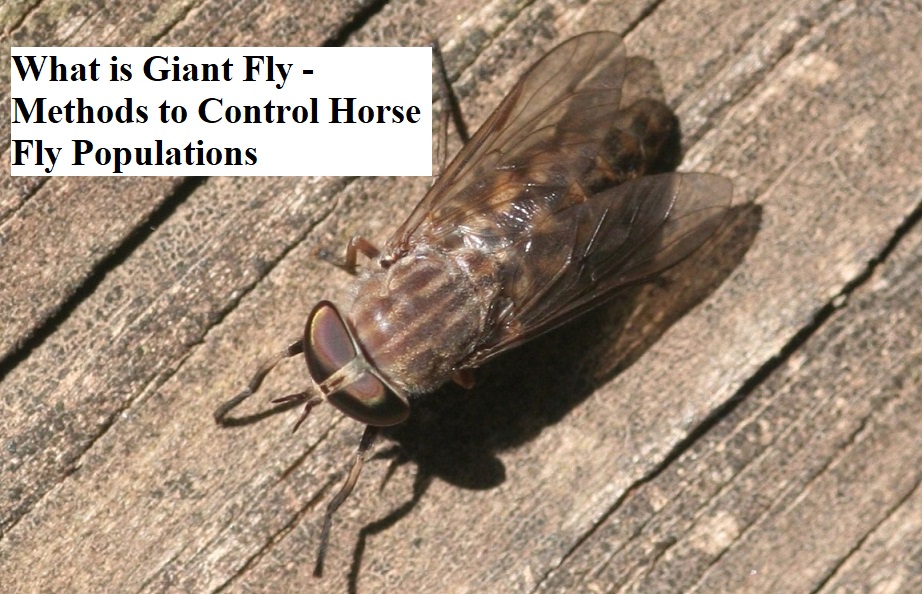Giant flies can refer to different types of large insects, but the most commonly discussed in real-world contexts are horse flies, particularly those in the genus Tabanus. The term “giant fly” can refer to various large insects, horse flies are the most relevant in a biological context, characterized by their size, painful bites, and significant impact on livestock.
Horse Flies
Horse flies are notable for their significant size, typically ranging from ½ inch to 1 ¼ inches long. They possess a robust body covered with small hairs, large compound eyes, and prominent mouthparts that extend downward. These flies are often black, grey, or brown, with some species exhibiting striking color patterns.
Behavior and Lifecycle
Horse flies are most active during the summer months, with females requiring blood meals to develop their eggs. They can inflict painful bites, making them a nuisance for livestock such as cattle and horses. The lifecycle involves laying eggs on vegetation near water, where larvae hatch and develop in aquatic environments. Most species have one generation per year, overwintering as larvae.
Giant Fly in Popular Culture
In fictional contexts, such as the Avatar series, a “giant fly” refers to a large insect that inhabits swampy areas and is hunted for food by local tribes. Additionally, in the game We Need to Go Deeper, the Giant Fly is depicted as a rare enemy, showcasing the versatility of the term across different media.
The Most Effective Methods to Control Horse Fly Populations
Controlling horse fly populations effectively requires a multi-faceted approach that combines environmental management, chemical treatments, and biological methods. Here are the most effective strategies:
Environmental Management
-
Manure Management
Regularly clean stalls and paddocks to minimize breeding grounds. Remove manure daily and store it away from horse areas. Compost piles should be covered to prevent attracting flies.
-
Moisture Control
Eliminate standing water and minimize muddy areas, as these are prime breeding sites for flies. Modify watering systems to prevent puddles and clean up any objects that can collect water.
-
Feed and Hay Management
Store feed in airtight containers and clean up any spilled grain or damp hay, which can attract flies. Ensure feeders are cleaned regularly.
Chemical Control
-
Fly Sprays and Repellents
Use commercial fly sprays designed for horses, such as Pyranha Equine Spray & Wipe, which repel and kill flies on contact. Apply these products according to the manufacturer’s instructions for best results.
-
Feed-Through Fly Control
Products like SimpliFly Feed-Thru Fly Control can be added to horses’ feed. These products work by preventing fly larvae from developing in manure, effectively breaking the fly life cycle before they can emerge as adults.
-
Insecticides
For severe infestations, targeted insecticides can be used. Products like Flex 10-10 and Pivot IGR can help control adult flies and their larvae when applied correctly in the environment.
Biological Control
-
Parasitoid Wasps
Introducing natural predators such as parasitoid wasps can significantly reduce fly populations. These wasps target fly larvae and help control their numbers without harming beneficial insects.
-
Entomopathogenic Fungi
These fungi can infect and kill flies, providing a biological means of control that is less harmful to the environment compared to chemical methods.
Additional Strategies
-
Physical Barriers
Installing large fans in barns can help deter flies by creating airflow that makes it difficult for them to fly around horses.
-
Fly Traps
Using fly traps, such as Fly Relief Fly Traps, can help capture and reduce the adult fly population in outdoor areas.




